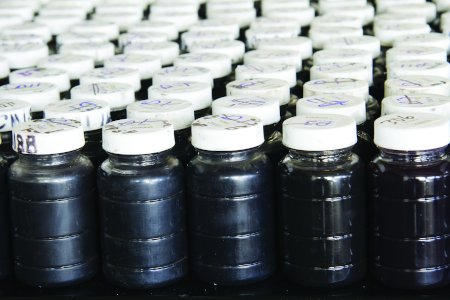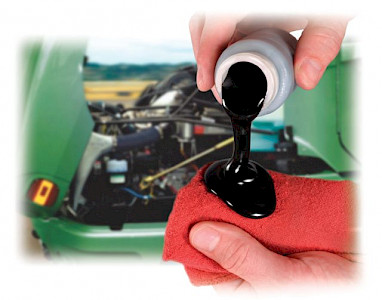Ask the Experts
“What are the corrective actions for a high particle count? Is there any standard particle count for fresh oil?”
 There are multiple corrective actions for a high particle count. Selecting the appropriate action will depend on operational and environmental conditions. If a high particle count is noticed in a component through oil analysis, the first question you should ask is where are the particles originating.
There are multiple corrective actions for a high particle count. Selecting the appropriate action will depend on operational and environmental conditions. If a high particle count is noticed in a component through oil analysis, the first question you should ask is where are the particles originating.
The initial reaction is usually to change or filter the oil. However, determining where the particles are coming from can save time, money and numerous headaches down the road. Simply removing the particles only focuses on the failure symptom and not the root cause.
Common root causes of high particle counts include new oil, ventilation and breathers, seals, wear generation, service and manufacturing debris, and filter dumping or bypassing.
New Oil
It is a common misconception that new oil is clean. In fact, when tested straight from an unopened drum, most new oils have particle counts that are in some cases 32 times dirtier than what you would prefer to have in your equipment.
Ventilation and Breathers
Every machine "breathes," so proper precautions must be taken to ensure that clean, dry air is entering the system. Other-wise, particles will build to uncontrollable amounts over time.
Wear Generation
Some particles measured during a particle count may not be strictly contamination from outside sources but rather the effect of this contamination in the form of wear debris.
Service and Manufacturing
Debris Even brand-new equipment must be inspected for cleanliness. Often new components are not flushed or cleaned after assembly. This will lead to high particle counts after installation.
Filter Dumping or Bypassing
Systems with built-in filtration may run dirty because of operational conditions or a flaw in the design. In this case, all the particles that you assume are being caught by the filtration system are being sent throughout the internal components.
While this is by no means a complete list of potential causes of high particle counts, it does represent some of the most common. The best practice is to determine how the particles are entering or being generated by the system.
It has been proven that the exclusion of particles is 10 times more cost-effective than removal. Therefore, exclusion should be the first priority, and then a focus can be placed on removal.
Keep in mind that new oil particle counts vary widely, and many factors contribute to high particle counts. The simple truth is that new oil should be assumed to be dirty, and it must be cleaned before being used.
“What is the best method to detect soot in diesel oil?
Our labs use Fourier transform infrared (FTIR) spectroscopy as a primary means of measuring soot in used diesel engine oils. I have been told that viscosity at 40 degrees C is a good indicator as well. Which instruments or methods will give me the most accurate soot level?”
 There are several available tests that can detect soot load in diesel oil. As a screen test with a lower cost, FTIR is a great indicator of soot.
There are several available tests that can detect soot load in diesel oil. As a screen test with a lower cost, FTIR is a great indicator of soot.
It is capable of measuring more than a dozen parameters, with some more reliable than others depending on the susceptibility to interference in the established wavenumber region.
While the data collection is relatively easy, there are challenges with measurement accuracy, especially as the size of the soot particles increases and constituents like dirt are included.
The maximum detection limit can range from 1.5 to 5 percent. This is concerning since the critical limits for engines with exhaust gas recirculation (EGR) maybe 8 percent, and non-EGR systems maybe around 5 percent.
Other alternatives include the pentane insolubles test, the light extinction method and thermogravimetric analysis. The pentane insolubles test consists of separating insolubles from the oil with the aid of a solvent mixed with the lubricant.
The solvent may commonly be pentane and toluene. The insolubles are flung out of the mixture with a centrifuge or filtered out with a filter membrane. While this is a preferred method with a lower cost, it poses concerns when other insolubles are included, as they will be measured together.
The light extinction method involves light being cast at specific frequencies through the oil and then measuring its obstruction by the drop in voltage. Again, there are some issues with this method related to other potential objects obstructing the light, even water and air bubbles.
The thermogravimetric analysis may be the most accurate measurements of soot load in an oil sample. It requires heating a sample through different stages to calculate the soot concentration by comparing the difference in weight of the volatile ash components to the original sample.
This test may have a much higher cost, so it is not a viable substitution for routine tests. Nevertheless, it is perfectly acceptable for exception testing after a screening test has been performed.
Soot dispersancy is an important lubricant property. It is defined as the lubricant's ability to keep soot particles finely dispersed and avoid agglomeration into larger soot particles.
This can be measured with a simple method known as the blotter spot test, which allows for a visual representation of the soot's dispersancy.
